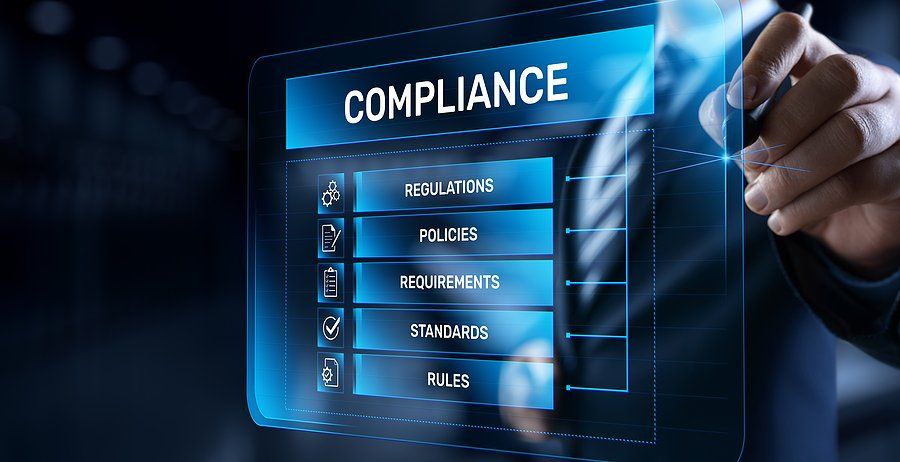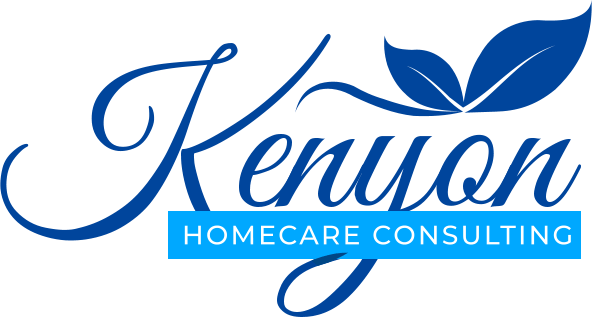Kenyon Connects
CLINICAL DOCUMENTATION

Over the years, Kenyon Homecare Consulting has been asked to provide nurse expert witness work in cases involving malpractice, fraud and abuse, and negligence. In the last several years, we have been most often asked to review cases involving wound care negligence and malpractice. So, consider your own wound care practices and decide if you are at risk of litigation or safe from malpractice. What We Normally See In Negligence Cases: The recurring theme in these cases is a patient who had a wound or develops a pressure ulcer that becomes infected and passes from sepsis. These patients are under the care of a home care, home health, or hospice provider. Let’s look at the list of things to consider in your clinical practice, operations, and documentation to assess your risks: Yes, we said hospice provider: Please note that the terminal status of the patient does not change the potential risk for litigation regardless of the patient being more susceptible to skin breakdown and to succumb to complications from it. Families expect the patient to pass from their terminal illnesses, but not to wound infection. This is always a potential blind spot for hospice agencies. If you have not followed your policies and maintained the proper documentation, then you will still lose a lawsuit even if there is nothing you could have done to prevent the development of the wound. Look at your policies: Are they up to date? We see a lot of policies with treatment now considered to be contraindicated. So, if you are sued and have policies that show you do things potentially detrimental to those in your care, you are at risk. A good example is the use of donut rings as a pressure reduction device. These are now known to cause pressure injury as opposed to prevent it. When you look at the topical treatment, is it synonymous with current industry standards for best practices? Does your policy show protocol for initiation of support surfaces when indicated? What about nutritional support and lab work to monitor nutritional status? If you aren't doing it, then don't mandate it in your policy. Procedures: This is the big one. If your policies are good, then you need to follow them. Now, this is true for everything in our industry, but when you have treatment and prevention measures in policy and do not follow what it says, you will likely lose the case. There are many cases settled because of agencies not following policies and procedures. The minute you are sued, everything about the provision of care goes under the microscope. You need to make sure policies are not so intricate that it is unrealistic for your staff to follow them. You also need to make sure clinical staff knows and understands your policy related to caring for these wounds. We have had cases where a nurse calls the physician and documents asking for the use of a certain treatment that is not in your protocol. Education/Assessment/ Documentation: Having a nursing degree does not mean every nurse can walk into every department and provide competent care in all situations. You cannot assume your nursing staff and therapists are skilled at assessment and know how to recognize the etiology of every wound if you have not provided the teaching. We have seen the documentation that lists a wound as a pressure ulcer and then the next week it is listed as venous stasis. If your staff is not skilled at defining what caused the wound based upon the characteristics, location, and patient medical background, you have not shown competency of staff to provide safe care to the patient. Documentation and interventions need to match the diagnosis. If you have a venous stasis ulcer and interventions are related to pressure relief, you are at risk. You may say this is something that does not happen at your agency, but we see it all the time. Who is responsible?: The answer needs to be everyone who sees that patient. This is often a responsibility delegated just to nursing, but this should never be the case. When you have a patient at risk for skin breakdown, every clinician needs to address it. This means every aide visit, every nursing visit, and every visit made by a therapist. When pulled into the courtroom, you will be asked why no one looked or documented on skin between nursing visits even through the patient had 2 aide visits and 2 therapy visits. You have no protection against the nurse documenting no skin breakdown last Monday but walking into a stage 3 pressure ulcer the next week. These are just some of the considerations for your agency when it comes to keeping your agency safe from a negligence claim related to wound care. At Kenyon Homecare Consulting , we focus on high-quality, patient centered care and helping your agency provide it. Call us today at 206-721-5091 or contact us online and let us help you and your agency achieve the outcomes you desire.

Documentation has become very cumbersome. There are certain items that must be contained in your documentation whether you provide home health or hospice services. However, with the initiation of the electronic medical record, something seems to get lost. It's the patient. We have beautiful care plans and comprehensive assessment tools available to us in our EMR, but so often the nuts and bolts of patient care isn't clear in what we document. What are we missing? It's the clinical note. Remember When? Many of you may not remember the days before the EMR was standard. Those of you who do will note that documentation was much simpler then. One thing was clear though, a clinical note communicated what the focus or skill of the visit was, what teaching was completed, whether the patient or caregiver verbalized understanding/ was able to return demonstrate task, and what the plan for the next visit was. It was that simple. Sure, there were notations if a physician was called or an order was taken, but it was normally easy to know what was happening with the patient over the course of many visits. How Do We Fix It? Well, it begins with streamlining the EMR. When we go into agencies, we see an EMR with everything activated in a patient assessment. Now, we are not suggesting you inactivate body systems but you need to look at what your staff is required to document each visit. Staff should go into depth on certain body systems where it makes sense for the patient. But, if your assessments are excessively comprehensive, do you miss the focus of the visit altogether? If you are an agency that has eliminated a clinical note, then how does staff know what happened in previous visits without taking an inordinate amount of time to review? Do they actually do it? In a perfect world, the same nurse or therapist would see the patient every time a visit was made, but this isn't realistic especially in rural agencies. The same concept applies in hospice. Do you need a ton more data or clinically specific documentation that leads to better care that flows from visit to visit? What have you gained by eliminating a good clinical note? We would argue you have not gained anything. At Kenyon Homecare Consulting , we help agencies to provide high quality efficient care that promotes patient satisfaction and positive profit margins. We can help with strategies to streamline your EMR and clinical operations to achieve it. Call us today at 206-721-5091 or contact us online to speak to a senior consultant for free today!

Survey time is always stressful for agencies. You work everyday to provide quality care and monitoring, but it doesn't mean something can't slip through the cracks. If you are getting ready for your survey, then let's look at what an accrediting body cited the most in the agencies it surveyed during 2020. Top 10 CHAP Hospice Survey Deficiencies In 2020: The Community Health Accreditation Partner (CHAP) has compiled the top 10 list of deficiencies cited during hospice surveys in 2020 . These are the items listed in their reference materials as of May 20, 2021. L626: This L tag refers to the aide providing services in accordance with the plan of care and as ordered and permitted by training. Tips: Communication is key here. Make sure assigned tasks are completed frequency of visits is followed. Discuss this is IDG meetings and have a system in place to communicate changes to the aide. L545: The standard states the is an individualized care plan with goals/ interventions based upon problems identified in the comprehensive assessment. Tips: Here is where agencies should utilize the IDG to review identified problems and correlating intervention as well as goals. Auditing should be in place to make sure changes are updated within the care plan. Ultimately, what is documented in the comprehensive assessment should look like the same patient in goals and interventions. L543: This regulation states that h ospice care and services follow an individualized written plan of care. Tips: This is all auditing to make sure your clinicians are following the plan of care. L678: This L tag states is about the clinical record being complete with all the required elements including the physician orders. Tips: This is another compliance issue that can be addressed and maintained through routine clinical auditing. L530: L530 is the comprehensive assessment including a drug review. Tips: Make sure clinicians are capturing over-the-counter meds as well as herbals in the med list. This is something that needs addressed each visit to validate the current meds are still current with no additions or subtractions. Review the clinical documentation to make sure the med profile has all medications listed. L553: This L Tag refers to the revised plan of care including current information from latest assessment and progress towards outcomes. Tips: All new and ongoing problems have to be addressed with interventions and goals. If there is no progress towards those goals, then you may need to look at different interventions to more effectively address the goals. This is where revision of your care plan is vital to make sure it addresses the patient "seen" in the assessment. L625: Written aide instructions are developed by the RN. Tips: This is an ongoing record review item. Reviewer needs to make sure the aide instructions are specific to the needs of the patient. Again, the aide instructions should mirror the patient your documentation shows in the assessment. If there is a mismatch or no specificity, there will be a problem. Reviewer also needs to make sure the RN is the one that prepared the aide instructions. L523: This tag is related to timing of the initial and comprehensive assessment. It can be completed no later than 5 days after the benefit election. Tips: You need a system in place to ensure all core disciplines are aware of when a patient was admitted. Use clinical auditing to ensure compliance and make sure that IDG members were involved in the completion of the assessment. HIPC.9.1 L Tag: N/A: This is not an L tag but a CHAP standard and part of the top ten. This is your TB screening per regulations and CDC guidelines. Tips: Your surveyor will review your agency's TB program to ensure it is current with regulation/ CDC guidelines. If testing is required, then you need to have successful tracking to ensure you are following timeframes. L579: This L Tag references following standards of practice to prevent infections including standard precautions/ hand hygiene. Tips: This should be closely monitored during supervision visits in the field. This is also part of the top 10 on the home health citations. Do not take for granted staff knows and is practicing hand washing per your policy or following routine infection control. At Kenyon Homecare Consulting , we can help you prepare for state or accreditation survey. Call us today at 206-721-5091 or contact us online to see how we can help you with a successful survey outcome. Although the CHAP top 10 is cited here as as reference, these are a sample set indicative of citations seen in 2020 regardless of whether you are accredited or not. If you are accredited, please utilize the free reference material available to you from your accrediting body whether it is CHAP, JCO, or ACHC.

Every time a home health agency has a successful survey, there is a collective sigh of relief from the whole agency. It is a stressful time. It is also defeating to know you are providing top notch care, but you still get cited at survey. If you are getting ready for your survey, then let's look at what an accrediting body cited the most in the agencies it surveyed during 2020. Top 10 CHAP survey deficiencies in 2020: The Community Health Accreditation Partner (CHAP) has compiled the top 10 list of deficiencies cited during surveys in 2020. These are the items listed in their reference material as the top 10 deficiencies and tips for compliance as of April 26, 2021: G440: This includes the portion of patient's rights related to charges and payment for services prior to the next patient visit. Tips: Does the document have all the required information listed? How is the patient notified with payer changes? How do you audit if the patients were informed? G614: Written instructions are provided to the patient including schedule of visits with the frequency of the visits. Tips: What is your process to provide this written information? Is it understandable to the patient? Consider supervisory visits that address this. G574: This G tag references the required elements of the individualized plan of care. Tips: Review your plans of care to make sure all items are there. In addition, these plans of care need to be individualized to meet the needs of the patient based upon what is listed in the assessment. CHAP cited the most missed elements to be measurable goals, over-the-counter meds, interventions to be completed in the visit, and co-morbidity diagnosis. G1022: This references the discharge and transfer summaries being sent to the appropriate practitioner within the allotted timeframes. Tips: What system is in place to make sure this is completed and timely within your agency? How is your agency informed of transfers and who is responsible to send the summaries? G710: This is about your skilled clinicians/ disciplines following the plan of care. Tips: Are you performing audits to identify issues with compliance to the plan of care? You need to assess and address trends you find in auditing. In addition, make sure orders are obtained prior to changing your interventions. G682: This is hand hygiene as part of infection control. Tips: This is direct supervision of the task on home visits. G536: This is your comprehensive assessment including medication review. Tips: The issue here often lies with medications being added. It is also relevant for over-the-counter meds not being included. G584: This G tag references verbal orders being taken by those authorized and authenticated on time. Tips: This has to be addressed as part of auditing to make sure it is done properly and timely. G684: This references infection control programs as part of your QAPI program. It also includes TB screening per regulation/ CDC guidelines. Tips: Make sure your agency policy and procedures are up-to-date with current CDC guidelines/regulation in reference to TB screening. There should be a tracking system and audits to make sure you are following guidelines when testing is required so you do not miss timeframes. G592: This G tag references care plan revisions that include measurable and patient specific goals, patient progression toward goals, and updated information. Tips: Again, the key here is auditing. Is your comprehensive assessment getting updated with a plan of care that matches it? When analyzing these findings from CHAP, ultimately you must have systems in place to audit personnel, documentation, and procedures. As we are still in the middle of a pandemic, it seems hard to believe that our clinicians wouldn't complete proper handwashing. So, the question is whether or not it was careless of the clinician or whether oversight and auditing from the agency misses proper handwashing technique with onsite supervisions. The same things apply to documentation. Does the agency actually update the care plan in clinical practice, but not in the clinical record? Although record review regulations are different from what they were in 2017, it doesn't change the need provide adequate oversight to ensure regulations are being followed. Too often agencies decrease oversight without completing periodic reviews and things become relaxed in documentation and in the field. Kenyon Homecare Consulting Can Help: At Kenyon Homecare Consulting , we focus on helping agencies provide high-quality, cost-effective care with results that matter for patients. Call us today at 206-721-5091 or contact us online to see if we can help you prepare for survey and make sure operations have you prepped for success.

Let’s think about how documentation has changed over the years in the home health and hospice industry. Many of us remember a one page flow sheet with a small narrative on back where we described exactly what we did in that visit and how the patient/caregiver responded to teaching. We documented things that weren’t “normal” for the patient. Today, our documentation looks a whole lot different and the question is what we gained. What We Gained: Access to a whole lot of information is the answer. The introduction to the electronic medical record allows easy access to vast amounts of information at our fingertips. Nurses and therapists can access scanned in documents from the hospital and see all the data from any previous visits. The changes to the care plan can be made immediately and physician’s orders are generated from the visits. There is no waiting to get back to the office to handwrite an order that was taken. You don’t have to wait and fax something off to the doc when you have direct access in software. Supervisors write direct messages to staff about visits while they are being made. These are all positives for use of the technology in providing services. When More Clinical Documentation Isn’t Better: Here’s the rub. Now, our care plans are standard. We don’t see a whole lot of variance between those patients who have the same diagnosis. While we would expect some things to mirror each other, there is also a lack of seeing the individuality in the patient’s situation. The same rings true for the documentation. There is so much documentation, that clinicians don’t have the time to truly review previous visits. There is a lot of repeat teaching that results in care plans where specific interventions were never addressed. Meanwhile, we write all goals met on a discharge summary when we never checked to make sure all goals were met. The patient may still need to be discharged, but often we take credit for things not documented. We also have seen a decline in the clinical note. The clinical note used to be the meat and potatoes of the visit. Any clinician could easily see what was happening with the patient with a clear and concise clinical note including what the plan for the next visit should be. Now, most items which were part of a clinical note are buried in different sections of the assessment. In our efforts to be more thorough, we are documenting a whole lot more while saying less. It is often so cumbersome, that the meat and potatoes end up missing. If you question this premise, then talk to your MACs about the findings of auditing. How many therapy visits were historically denied prior to PDGM? What nursing visits have 6 pages of documentation without clearly showing the clinical need or skill? The answer is a lot and this is why we see states in Review Choice and high denial rates. It’s because the data shows it just isn’t there. Without streamlining your documentation and making sense of what needs documented and where, you might as well be sitting at a blackjack table. Let Kenyon Homecare Consulting Help With Documentation: At Kenyon Homecare Consulting, we focus high quality, patient-centered care. This includes Oasis and documentation training. If you would like to streamline your documentation efforts to improve efficiency and accuracy, call us at 206-721-5091 or contact us online to see how we can help you minimize risk and improve documentation efficiency. Register today for our free webinar February 3rd, Unified Care Planning in 2021 and why it should be your best friend moving forward.it and delete this default text and start typing your own or paste your own from a different source.
